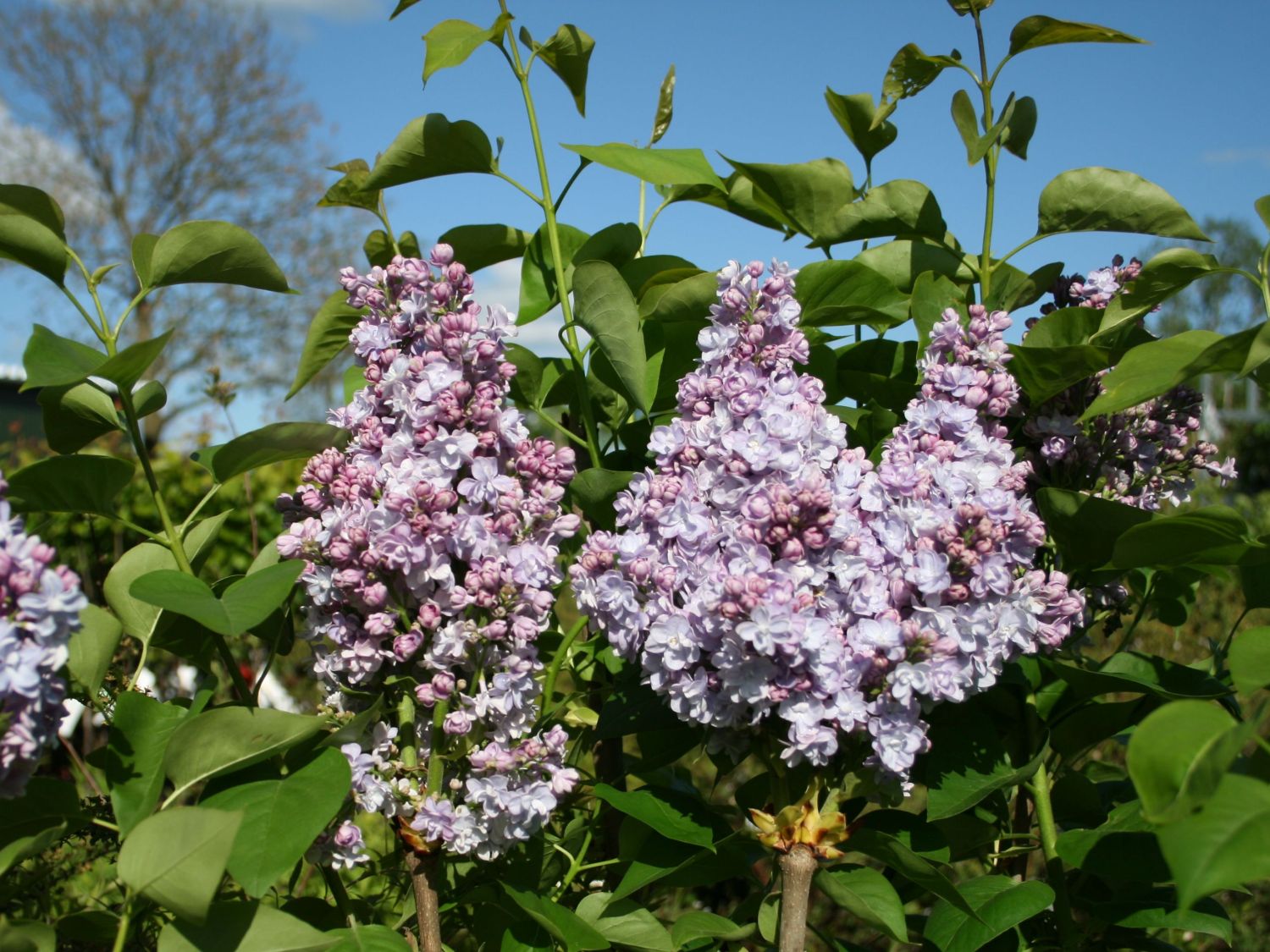
Edelflieder 'Michel Buchner' Syringa vulgaris 'Michel Buchner' Baumschule Horstmann
It is a leaf of the shrub, lilac ( Syringa vulgaris L.) ( Torres and Costello, 1963, p. 124). It is composed of an upper (adaxial) and lower (abaxial) epidermis. One stoma is evident in the lower epidermis. The thin, colorless layer deposited on the walls of the upper epidermal cells is called the cuticle and is composed of a waxy material.
FileSyringa vulgaris 003.JPG
Image - Wikimedia/Radomil. La Syringa vulgaris It is a plant that grows wild in southeastern Europe, specifically in the Balkans. Reaches a height of 7 meters at most, and can have a single trunk, or several that come from the base or from the roots, with a thickness of about 20 centimeters. These have grayish bark, and as they age they crack.

Gewöhnlicher Flieder Syringa vulgaris Beschreibung Steckbrief Systematik
The lilac (syringa) belongs to the classical garden shrubs and smaller trees, which emit the essence of spring. The tube formed blossoms, which appear on the wood in May, grow in colorful panicles and radiate an exquisite, unique scent. Without the blossoms, the visual appearance of the lilac shrub is stepping into the background.

Syringa vulgaris
Syringa vulgaris L. Sp. Pl. : 9 (1753) This name is reported by Oleaceae as an accepted name in the genus Syringa (family Oleaceae ). The record derives from WCSP (data supplied on 2022-04-18) which reports it as an accepted name Local Descriptions
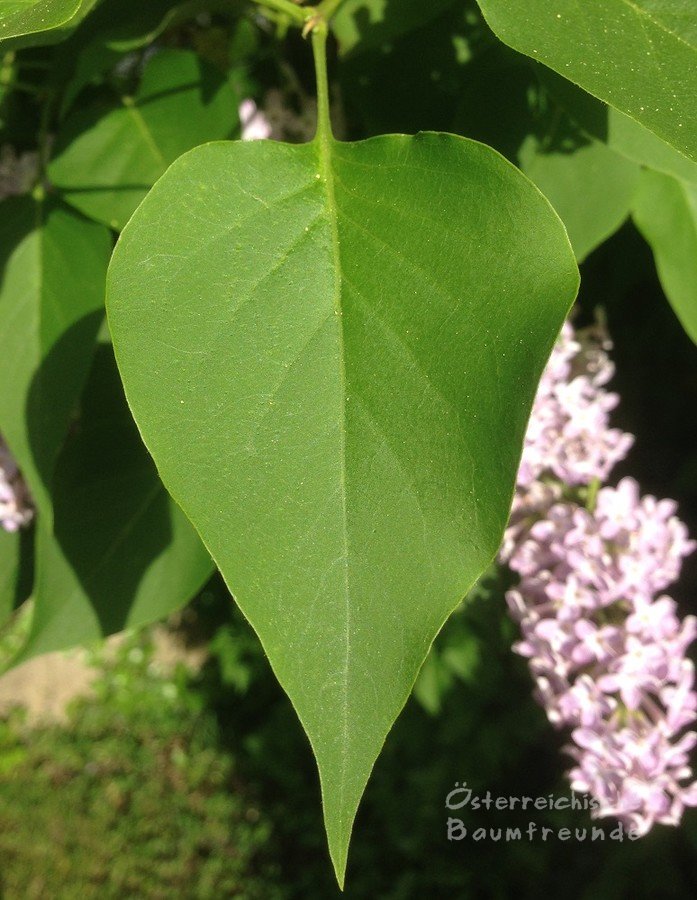
Gewöhnlicher Flieder Syringa vulgaris Österreichische
Planting lilac. Dig a generous hole and plant your lilac to the level of the soil line. Back-fill and firm down the soil gently around the plant. Water in well. Mulch after planting to help retain moisture in the soil. If you're growing lilac in a pot, choose one that is at least 60cm in diameter.

Syringa vulgaris 'Andenken an Ludwig Späth', Edelflieder 'Andenken an Ludwig Späth' Geschickt
Syringa vulgaris is a large deciduous shrub or multi-stemmed small tree, growing to 6-7 m (20-23 ft) high. It produces secondary shoots from the base or roots, with stem diameters up to 20 cm (8 in), which in the course of decades may produce a small clonal thicket. [7]
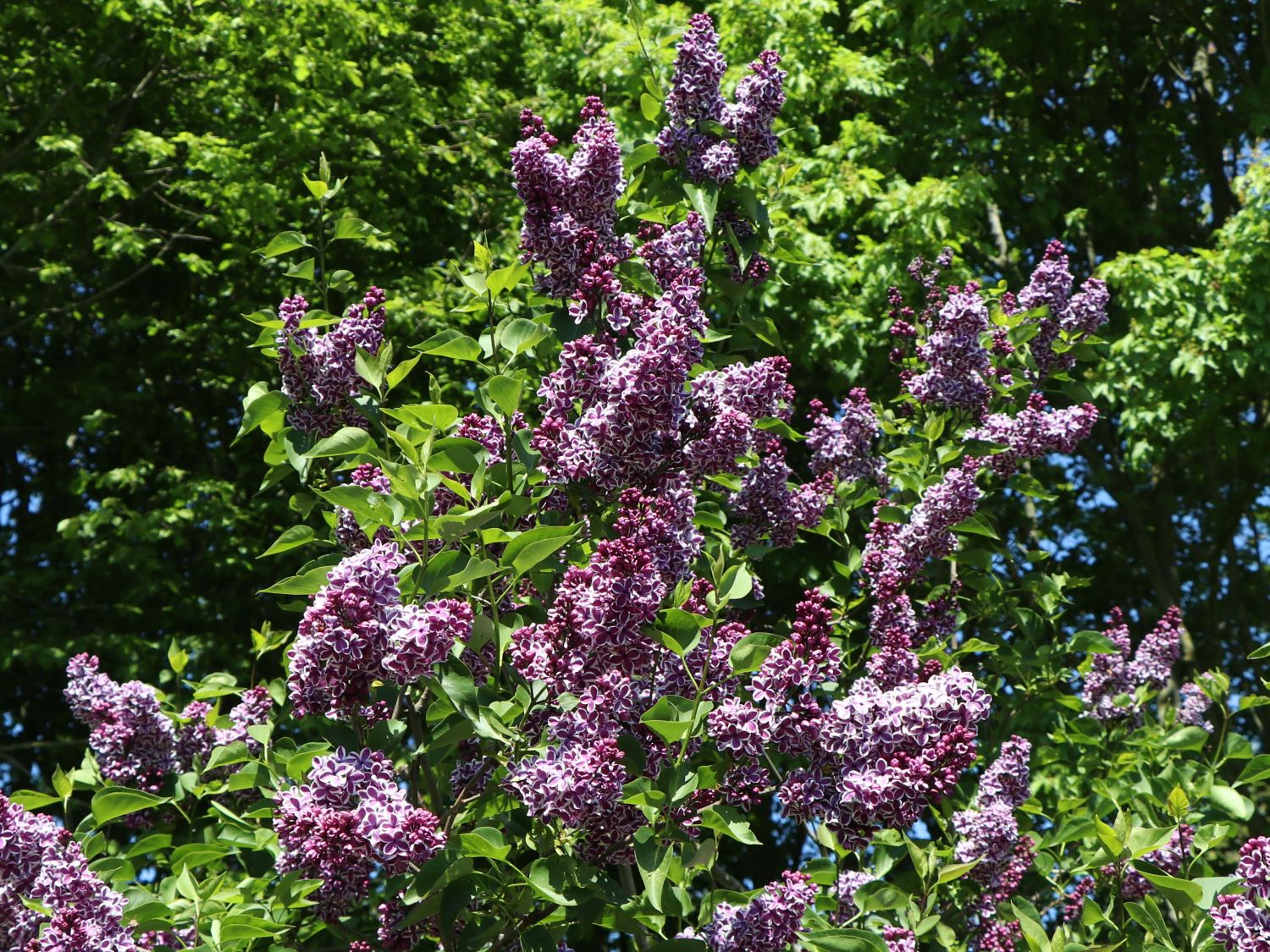
Edelflieder 'Sensation' Syringa vulgaris 'Sensation' Baumschule Horstmann
Der Edelflieder (Syringa vulgaris), auch Gewöhnlicher oder Gemeiner Flieder genannt, ist eine Gehölzart aus der Familie der Ölbaumgewächse (Oleaceae). Er stammt ursprünglich aus den Balkanländern, wächst jedoch auch bei uns seit Jahrhunderten in klassischen Bauerngärten.
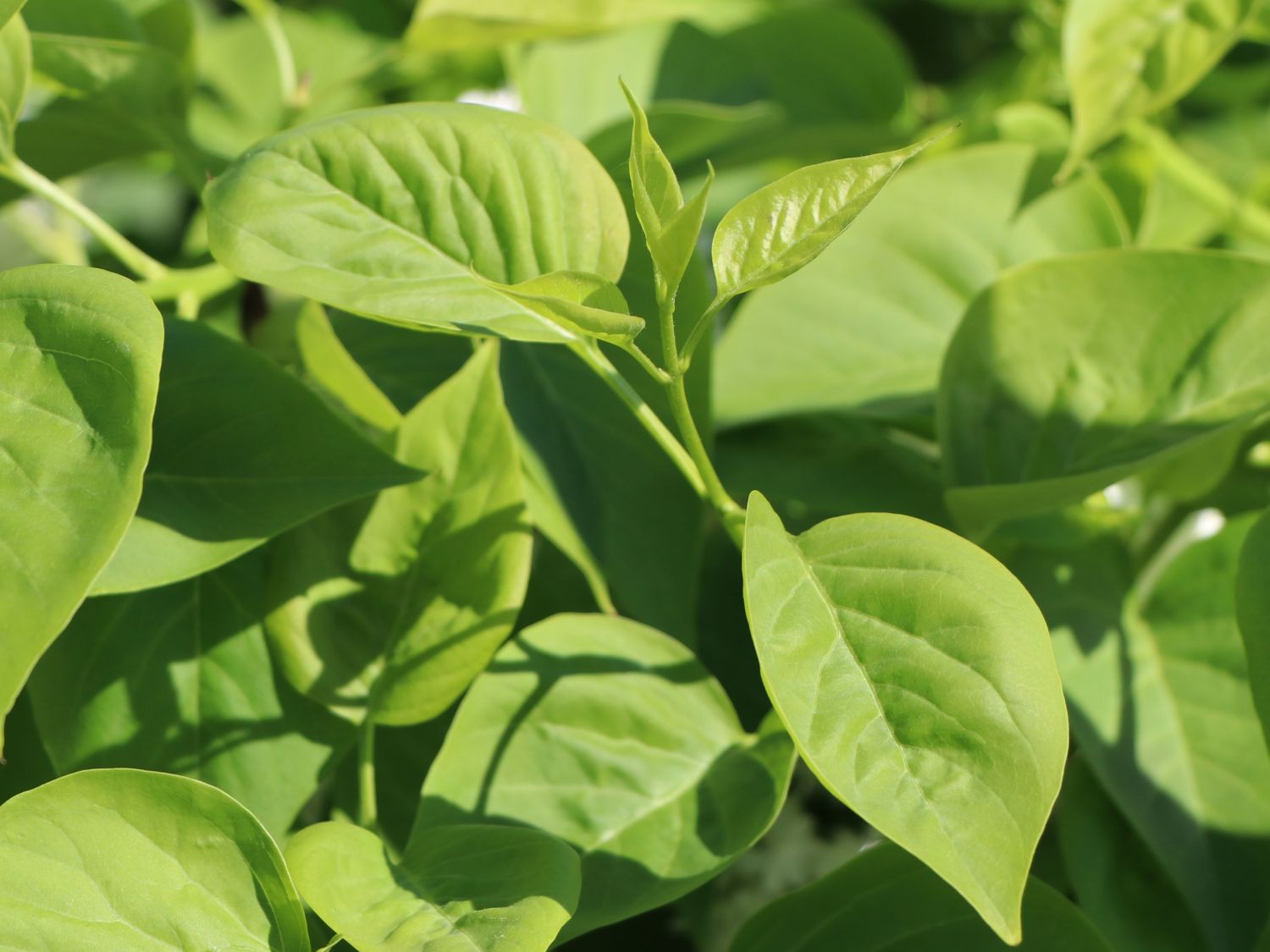
Edelflieder 'Mme Lemoine' Syringa vulgaris 'Mme Lemoine' Baumschule Horstmann
Common lilac bushes ( Syringa vulgaris) are deciduous shrubs that bloom in the springtime. They are part of the olive family, along with other such ornamental plants as ash trees, forsythia bushes, and privet hedges. The outstanding quality of many lilac varieties is the sweet fragrances of their flowers.
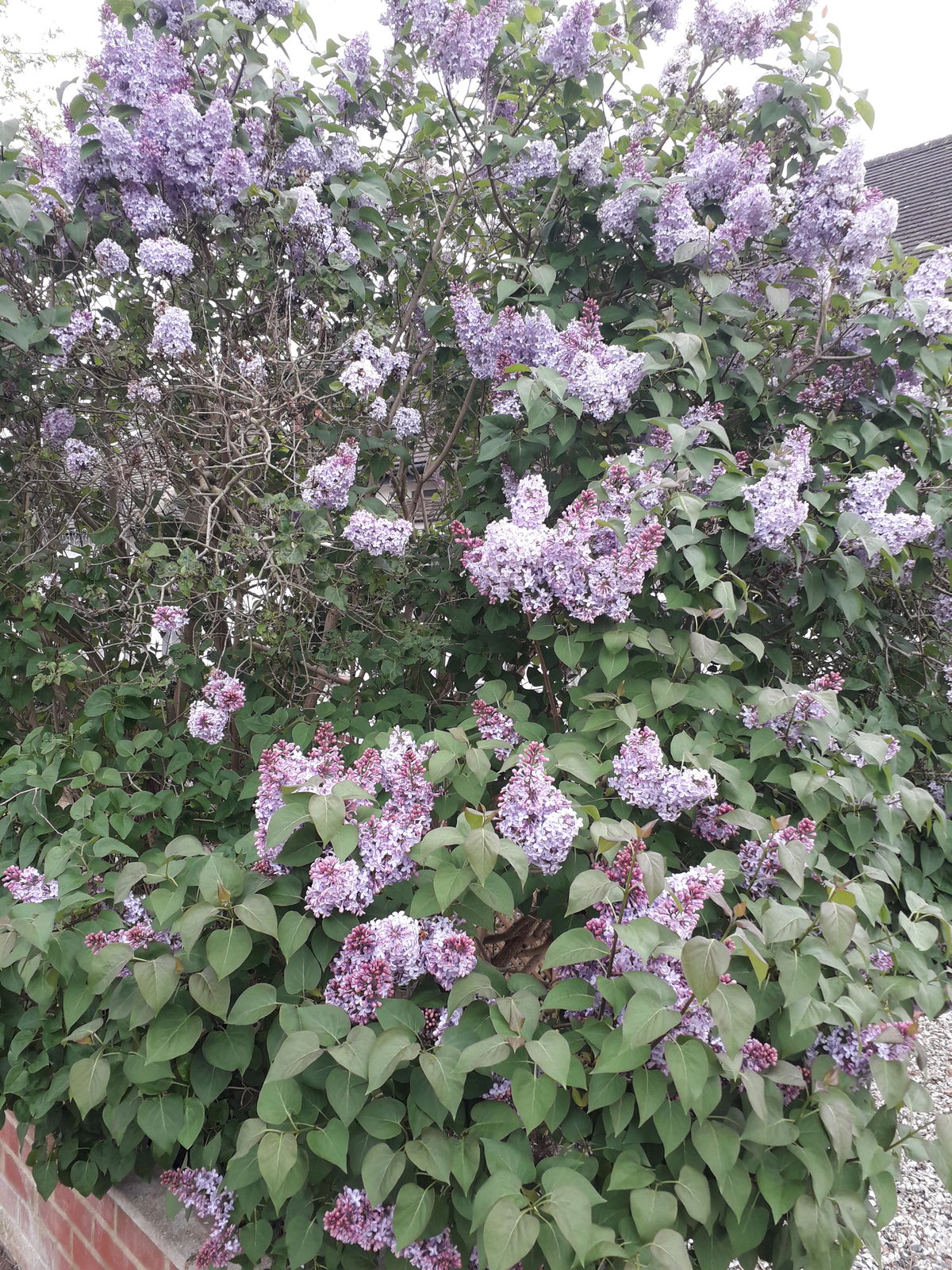
Syringa vulgaris L. Plants of the World Online Kew Science
Syringa Syringa vulgaris L. First published in Sp. Pl.: 9 (1753) This species is accepted The native range of this species is Central Albania to N. Central Romania. It is a shrub or tree and grows primarily in the temperate biome. Taxonomy Images General information Distribution Synonyms Publications Other data Distribution KBD Native to:

Syringa vulgaris 'Andenken an Ludwig Späth' Syringa vulgaris 'Andenken an Ludwig Späth' Van
I Lilacs of the Vulgaris Group (Series Syringa) At the beginning of the last century the gardener had few sorts of garden lilac to chose from. Apart from the common blue there was only the white and the purple or Scotch lilac, and a few minor variations of these two, but by the middle of the century new varieties were coming into commerce in.
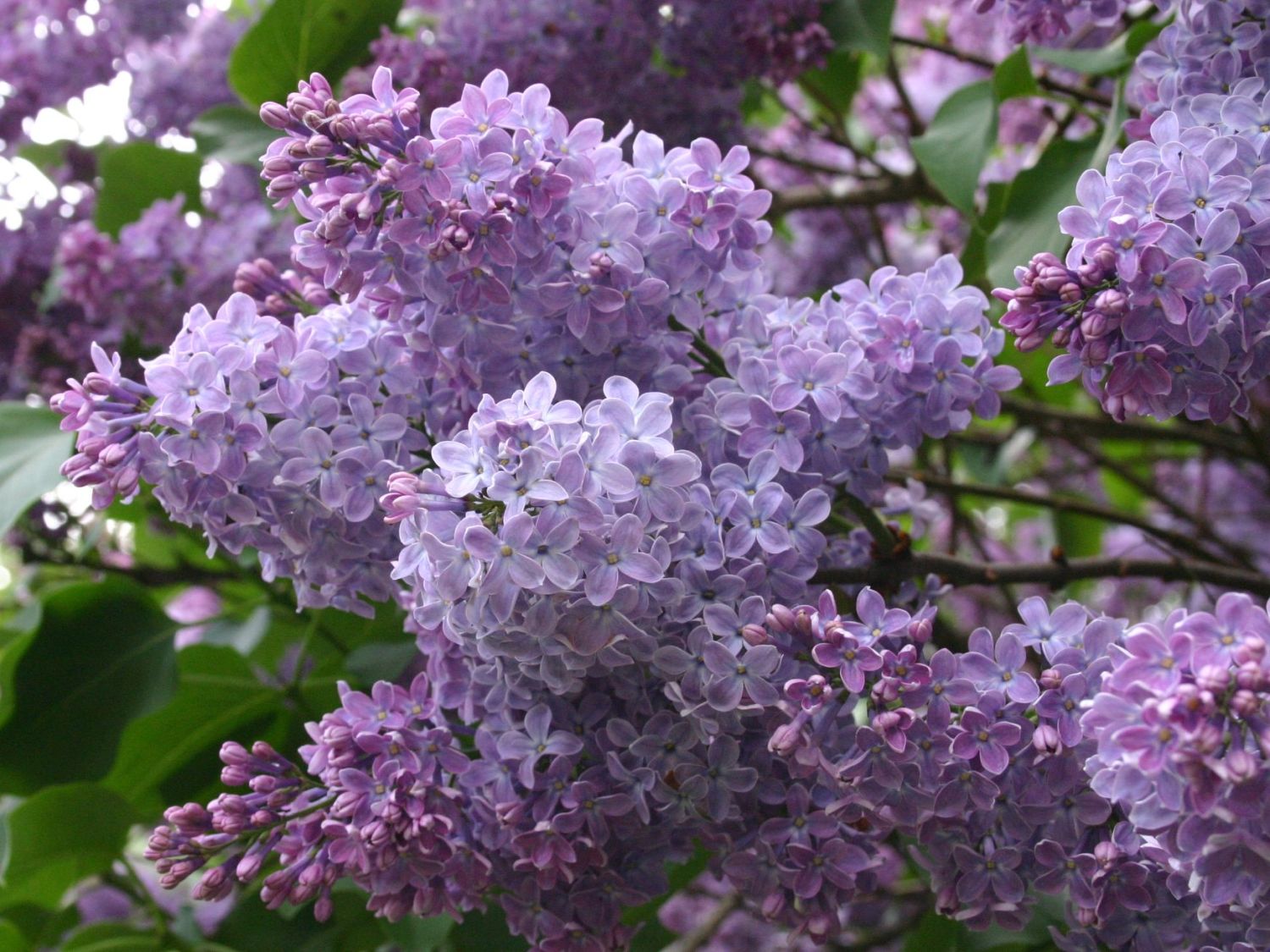
Wildflieder / Gemeiner Flieder Syringa vulgaris Baumschule Horstmann
Noteworthy Characteristics. Syringa × chinensis, commonly called Chinese lilac or Rouen lilac, is a cross between Syringa vulgaris (common lilac native to southern Europe) and Syringa persica (Persian lilac native to Persia now Iran). It is a spreading, multi-trunked, deciduous shrub with arching branches which typically grows 8-12' (less frequently to 15') tall.

syringa vulgaris Plant leaves, Photosynthesis, Syringa vulgaris
Syringa vulgaris L., also known as common lilac, is a flowering shrub native to Europe and Asia. It has fragrant purple or white blooms that attract pollinators and provide color and scent to gardens. Learn more about its characteristics, uses, and conservation status from the USDA Plants Database.
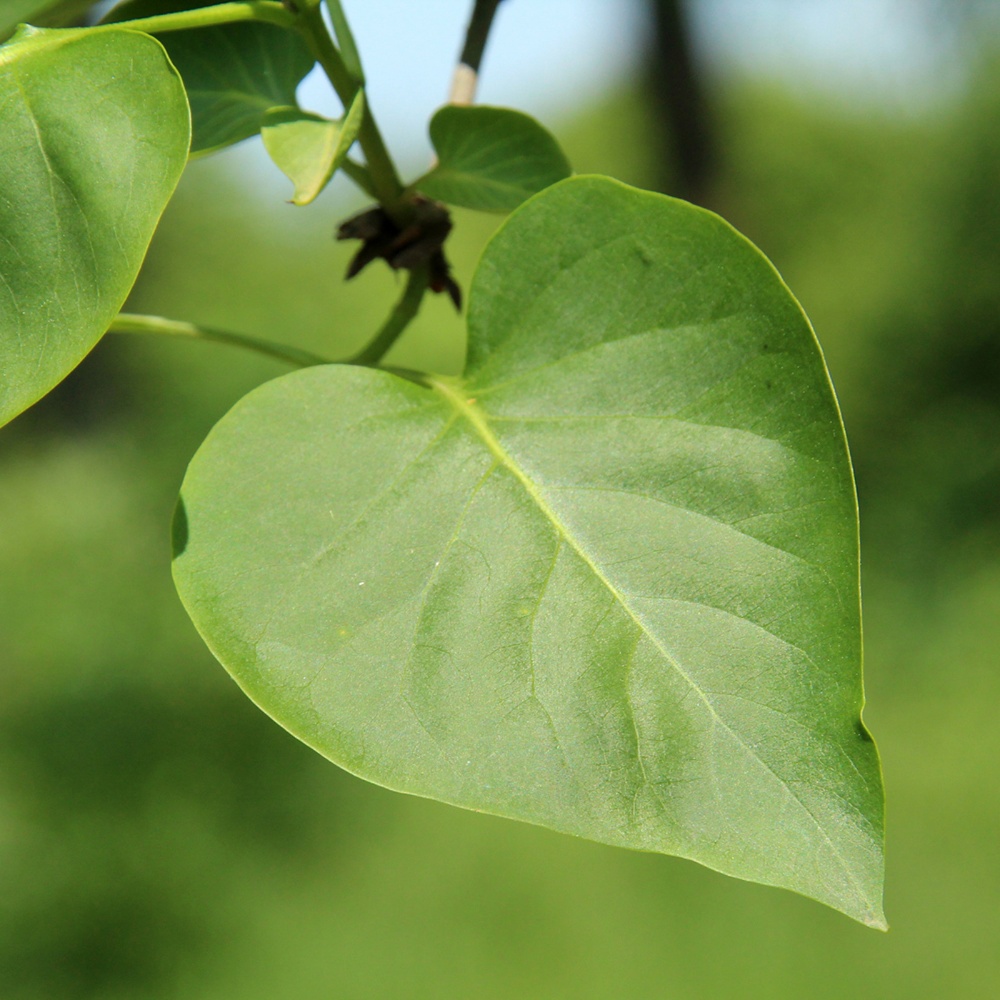
Syringa vulgaris Tree Species Selector (Alberta)
Type: Deciduous shrub Family: Oleaceae Native Range: Southeastern Europe Zone: 3 to 7 Height: 12.00 to 16.00 feet Spread: 8.00 to 12.00 feet Bloom Time: May Bloom Description: Lilac-purple Sun: Full sun Water: Medium Maintenance: Medium Suggested Use: Hedge, Naturalize Flower: Showy, Fragrant, Good Cut Attracts: Hummingbirds, Butterflies

Syringa vulgaris L. Plants of the World Online Kew Science
Description Common lilac is a highly fragrant, spring-flowering shrub or small tree. There are hundreds of cultivars available including single and double flowers of various colors including white, cream, rose, magenta, pinkish-purple, lavender, and purple. The pungently sweet fragrance is delightful but can be overpowering to some asthmatics.

Syringa vulgaris L. Plants of the World Online Kew Science
Noted for its unique color, award-winning Syringa vulgaris 'Primrose' is an upright, deciduous shrub with conical panicles of slightly fragrant, pale creamy-yellow flowers. Blooming in late spring, the ravishing blossoms last 3-4 weeks and make a rare and beautiful display. The erect, open branches are clothed in light green, heart-shaped leaves that remain attractive in summer.
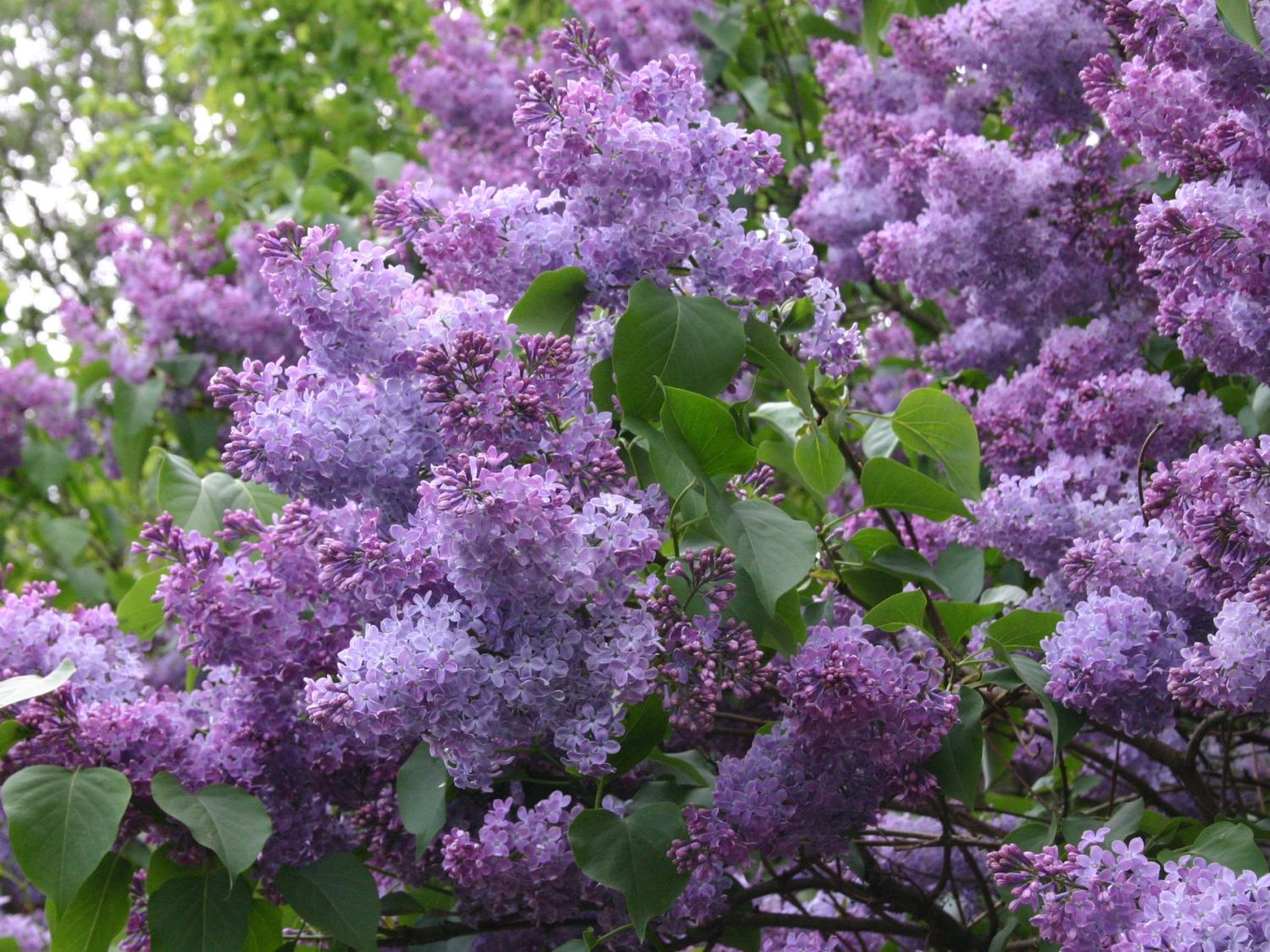
Wildflieder / Gemeiner Flieder Syringa vulgaris Baumschule Horstmann
Plant calendar Syringa 'Primrose' and wildlife Syringa 'Primrose' is known for attracting bees, beneficial insects, butterflies/moths and other pollinators. It has nectar/pollen rich flowers. Bees Beneficial insects Birds Butterflies/ Moths Other pollinators Is Syringa 'Primrose' poisonous? Syringa 'Primrose' has no toxic effects reported.